oVirt UI Plugin
General
Integration with the oVirt Virtualization interface allows administrators to perform most of the basic operations without logging into the Storware Backup & Recovery dashboard.
After installation (which is described at the end of this article) you will see a new tab "VM Backups" in the oVirt menu.
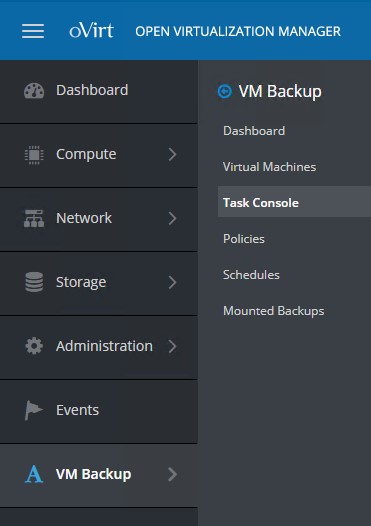
Dashboard
As usual, it contains a short summary of the environment along with a handful of statistics.

You can also see the data summary of the backup destination.
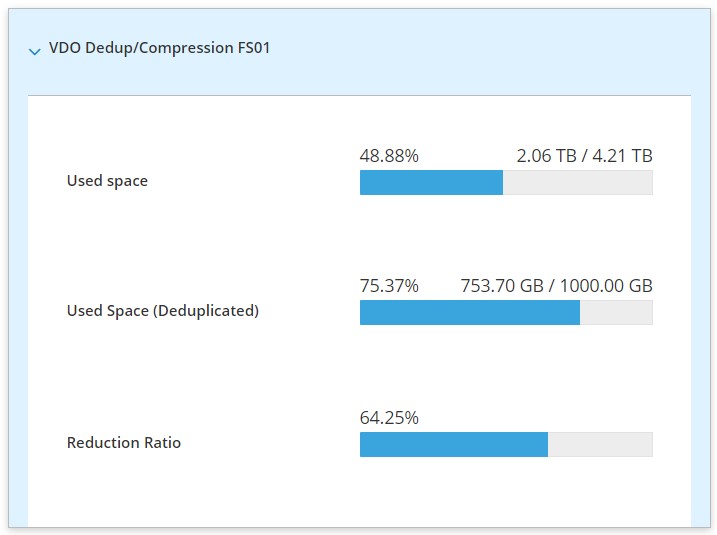
Virtual Machines
This tab shows all inventoried virtual machines in your oVirt environment. Besides, you can also perform the basic backup or restore operations.
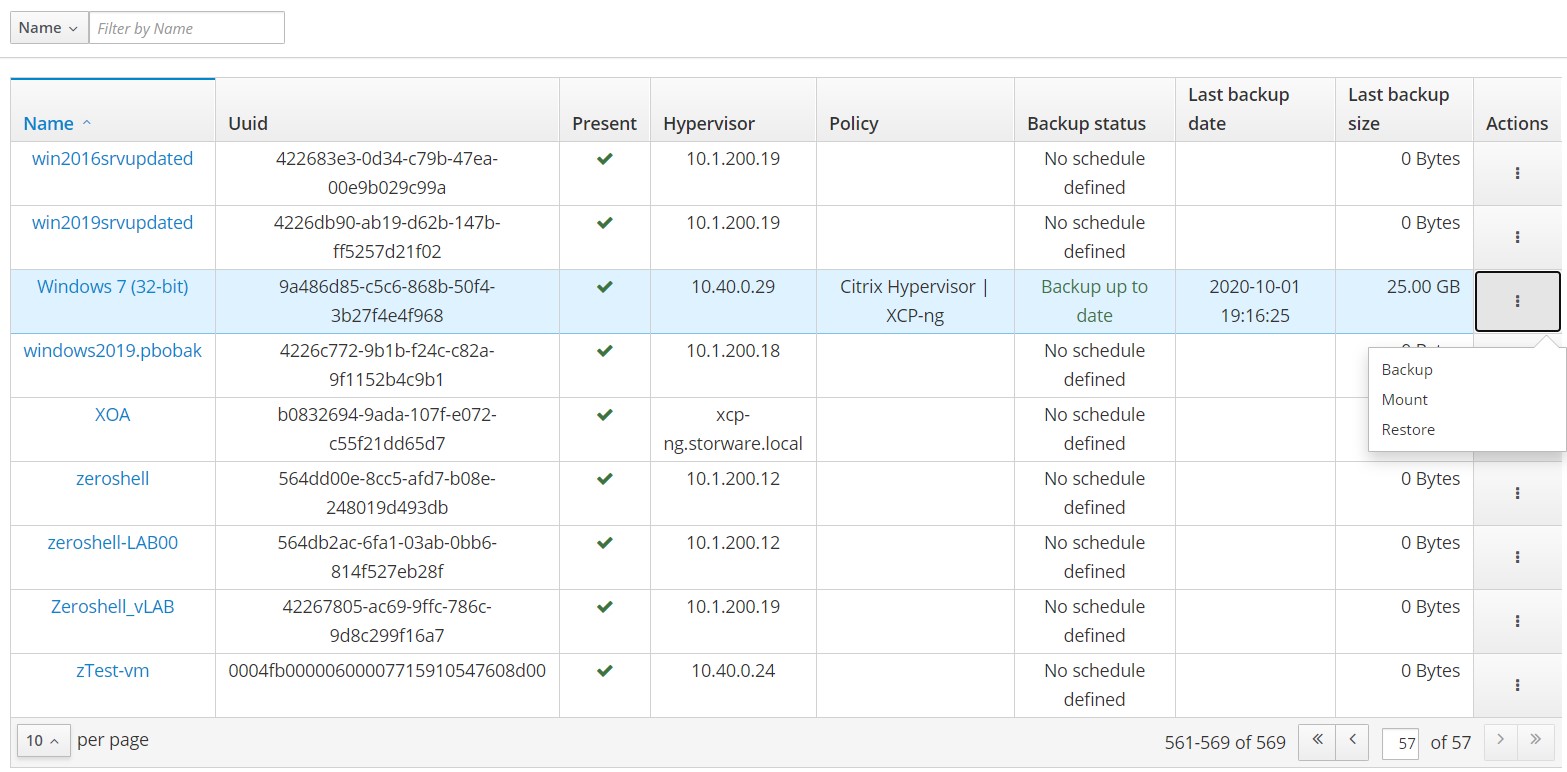
But that's not all, you can also go into the details of the virtual machine by clicking on its name:
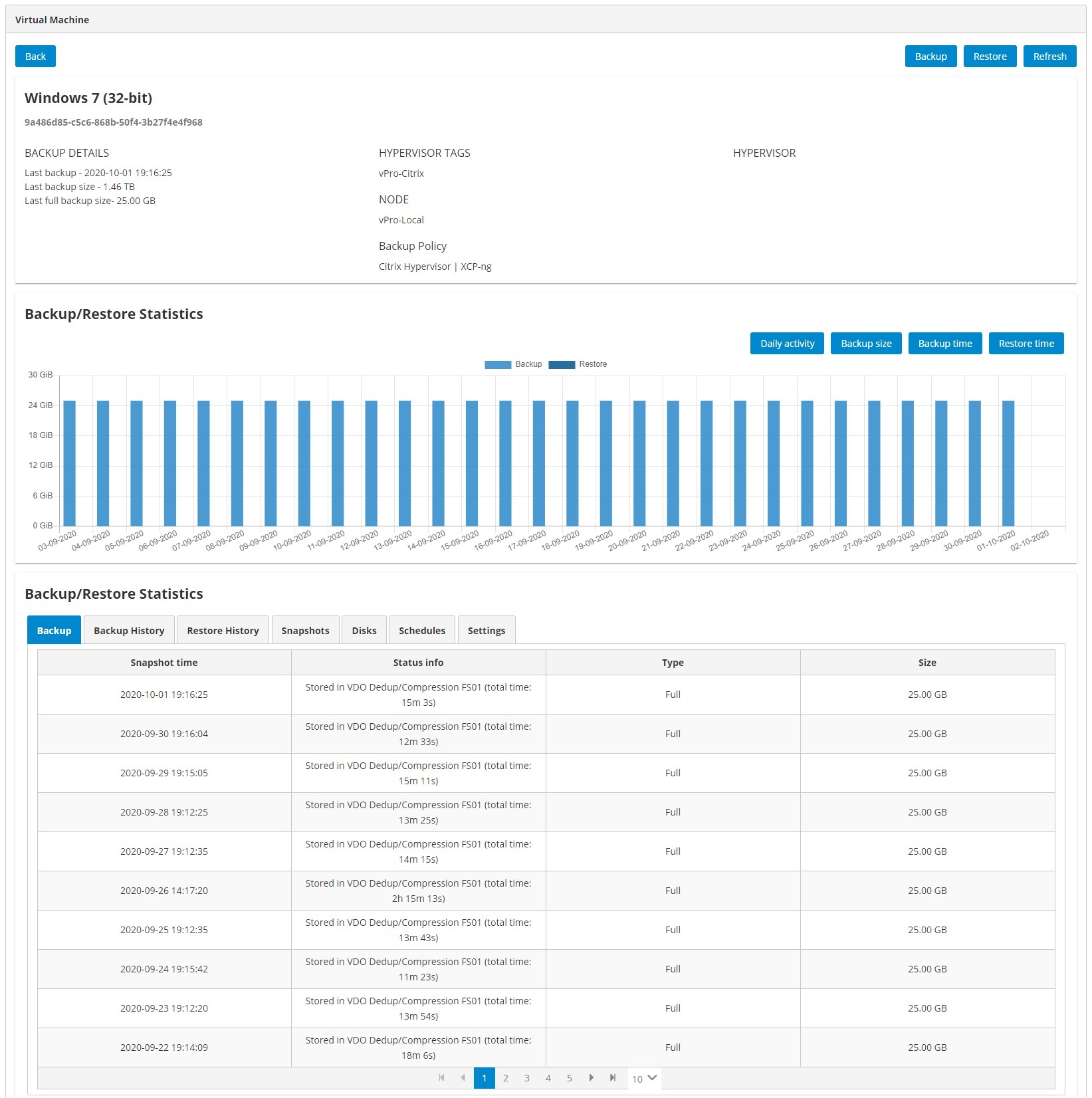
Backup window view:
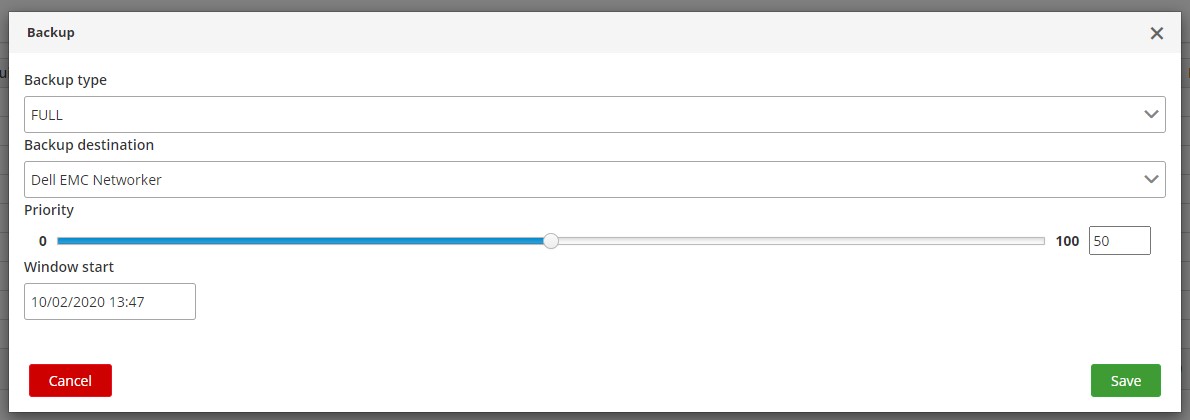
Task console
Basic information about current tasks performed by Storware Backup & Recovery.

Policies
Allows you to create policies for VM's backups and snapshots. It basically has the same functionalities as Storware Backup & Recovery WebUI.

Schedules
As with the policies tab, it allows you to create schedules for the created rules.

Mounted Backups
Finally, you can also browse your mounted backups from the oVirt dashboard. You only need to enter the backup details using the menu on the right.

From here we can see the basic information about the backup and start browsing the files using the "Browse" button on the right.
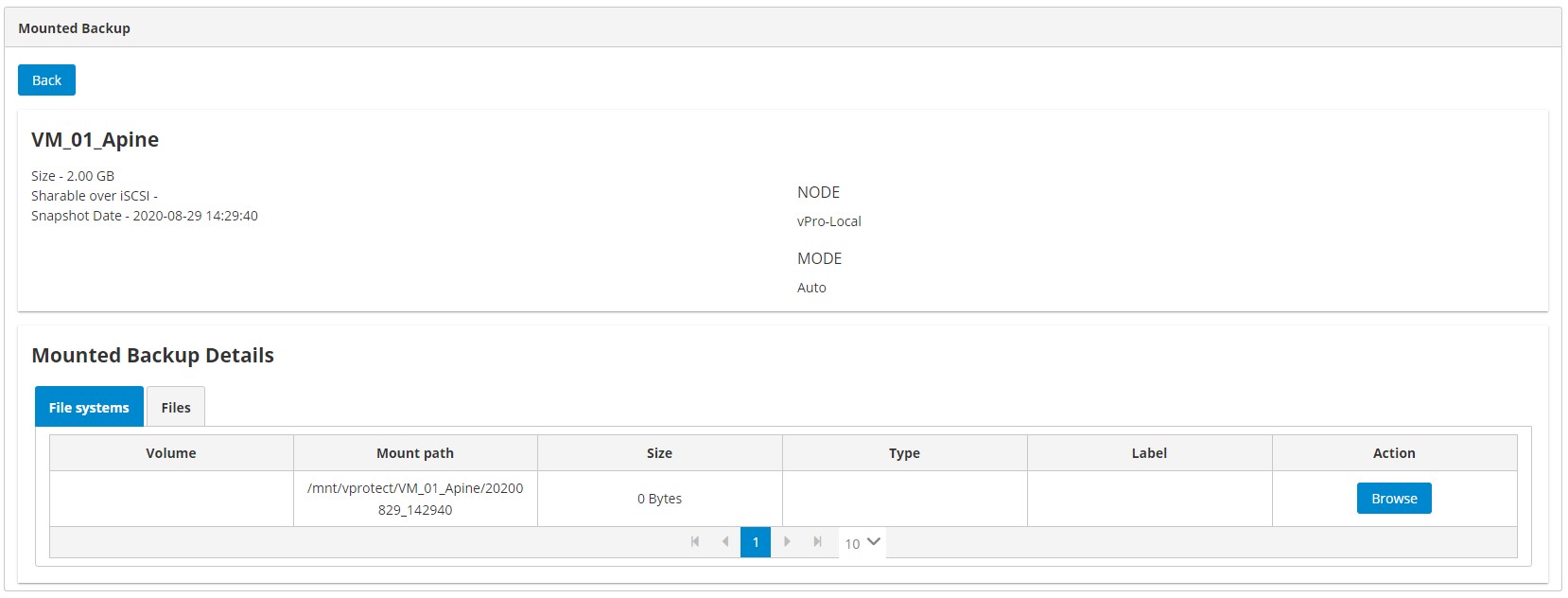
Just select a folder or file and then press the "download selected" button to have the files on your computer.
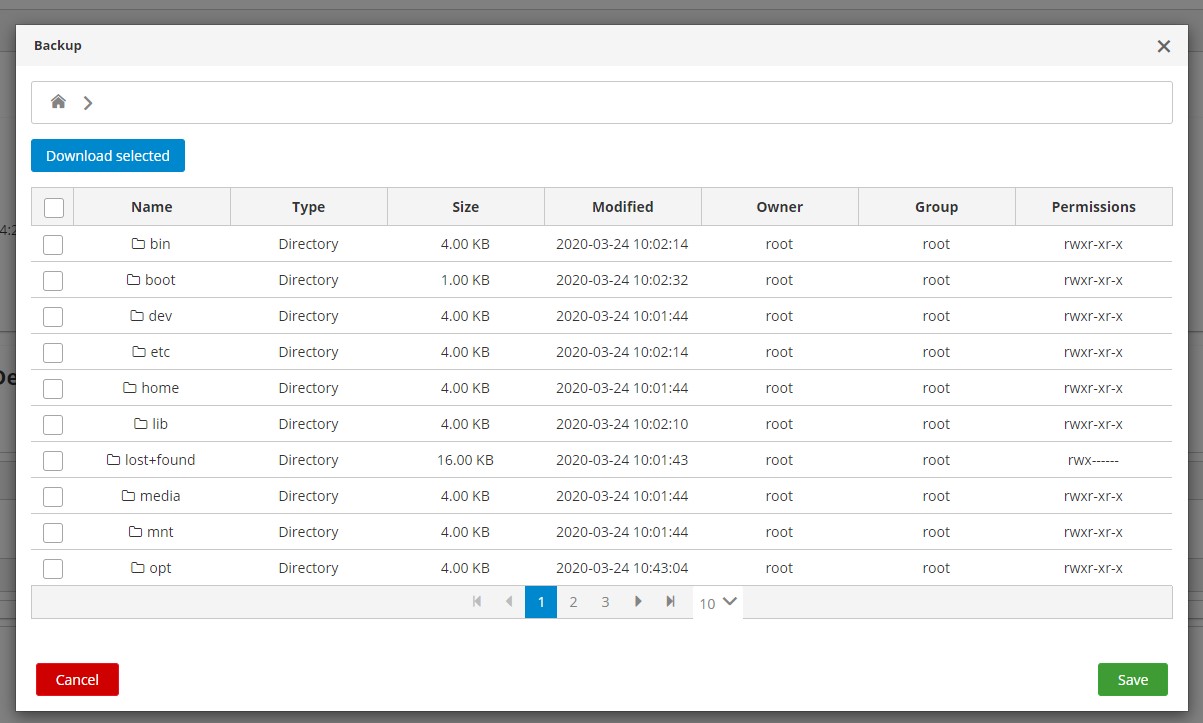
Installation
You can find the add-on in the GitHub repository. Follow the instructions in the README to build or download the plugin. Then extract the provided archive onto your oVirt manager.
In the file
vprotect.jsonedit these lines in the config part:Storware_URL- the URL to Storware Backup & Recovery APIusername- the name of admin in Storware Backup & Recoverypassword- the admin password in Storware Backup & Recovery
Example:
{
"name": "vprotect",
"url": "plugin/vprotect/plugin.html",
"resourcePath": "vprotect-resources",
"lazyLoad": false,
"config": {
"vProtectURL": "http://10.40.0.55:8080/api",
"username": "admin",
"password": "vPr0tect"
}
}Put the
vprotect.jsonfile andvprotect-resourcesdirectory in the/usr/share/ovirt-engine/ui-pluginsdirectory in the oVirt Engine.